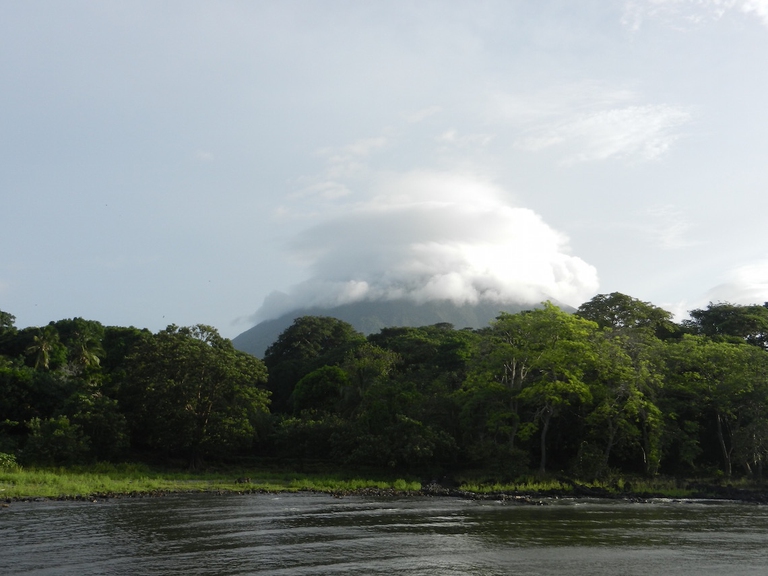
A special report from the Yuqui territory delves deep into the dreams, challenges, joys and sadness of one of Bolivia’s most vulnerable indigenous groups.
Nicaragua is the third poorest country in Latin America and has been desperately searching for a solution to its economic problems. Many hope the construction of the Grand Canal joining the Atlantic and Pacific Oceans, expected to start in early 2016, will provide the nation with the answers it needs, namely employment, trade and an
Nicaragua is the third poorest country in Latin America and has been desperately searching for a solution to its economic problems. Many hope the construction of the Grand Canal joining the Atlantic and Pacific Oceans, expected to start in early 2016, will provide the nation with the answers it needs, namely employment, trade and an injection of capital. Though it is unlikely the canal will achieve these goals, there is no doubt that the 278 kilometre long construction, over three times the length of the Panama Canal, will force over 100,000 people to relocate, including numerous indigenous communities.
Species that are currently endangered, such as the freshwater Bull shark and the Jaguarondi and Ocelot felines, may face extinction and many acres of rainforest will be eradicated. Lake Nicaragua, the largest freshwater reserve in Central America, will have to withstand the dumping of 100 billion tonnes of sedimentation from the dredging needed to make parts of it deeper, which in turn will destroy innumerable aquatic ecosystems. The Lake however is more than just an important source of wildlife, it provides water for thousands of square miles of farmland, hundreds of fisheries and is the basis of a thriving tourist industry many rely on for their livelihood.
The list of environmental threats continues, but perhaps even more worrying is the context of uncertainty surrounding the alleged economic benefits the Grand Canal will bring the Nicaraguan people. The rights to the project will remain in the hands of Chinese contractors, the Hong Kong Nicaragua Development Group, for 50 years after its completion in 2020 and the cost of construction is expected to rise from 50 to 70 billion dollars.
The Grand Canal of Nicaragua will likely be a social and environmental catastrophe with uncertain economic benefits for the country’s people. The manner in which the project was fast-tracked through Congress and the way in which private environmental and economic assessments have been systematically ignored does little to alleviate this suspicion. A scheme that many had hoped would help heal the Nicaraguan economy risks becoming nothing more than an open wound stretching across the entire breadth of the nation.
Siamo anche su WhatsApp. Segui il canale ufficiale LifeGate per restare aggiornata, aggiornato sulle ultime notizie e sulle nostre attività.
![]()
Quest'opera è distribuita con Licenza Creative Commons Attribuzione - Non commerciale - Non opere derivate 4.0 Internazionale.
A special report from the Yuqui territory delves deep into the dreams, challenges, joys and sadness of one of Bolivia’s most vulnerable indigenous groups.
A group of experts in Tokyo suggested pouring radioactive water from Fukushima into the open sea. A marine biochemist explains the consequences of this absurd decision.
The Yuqui people of the Bolivian Amazon fight not only to survive in the face of settlers, logging and Covid-19, but to preserve their culture and identity.
Jair Bolsonaro is accused of crimes against humanity for persecuting indigenous Brazilians and destroying the Amazon. We speak to William Bourdon and Charly Salkazanov, the lawyers bringing the case before the ICC.
The decline in grey and humpback whales in the Pacific and Atlantic Oceans has been traced to food shortages caused by rising ocean temperatures.
Activists hail the decision not to hold the 2023 World Anthropology Congress at a controversial Indian school for tribal children as originally planned.
The United Nations has launched a major international alliance for ocean science, undertaking a mission close to all our hearts.
Autumn Peltier is a water defender who began her fight for indigenous Canadians’ right to clean drinking water when she was only eight years old.
The pandemic threatens some of the world’s most endangered indigenous peoples, such as the Great Andamanese of the Andaman and Nicobar Islands in India.










